It is not often that you see a game franchise reinvent itself so boldly with its second entry; in many cases, the idea sounds unnecessary, redundant even. With Alan Wake 2, however, developer Remedy defies the conventions of modern-day video games because not only does it reinvent the franchise in the most artistically inspired way, but it pushes the series forward with ideas that redefine what a survival horror game should be
Alan Wake 2 is a direct continuation of its 2010 cult classic predecessor. The series’ second outing adopts a full-on horror survival approach with returning elements from the previous games dialed up to the max and new mechanics that elevate the gameplay and narrative to new heights.
There are unexpected twists and turns, a plethora of new mechanics, and a narrative so expertly crafted it would leave even the most dedicated Alan Wake fans with their heads spinning.
Remedy Entertainment opts for a very ambitious game that it not only manages to live up to but in many cases, even surpasses.
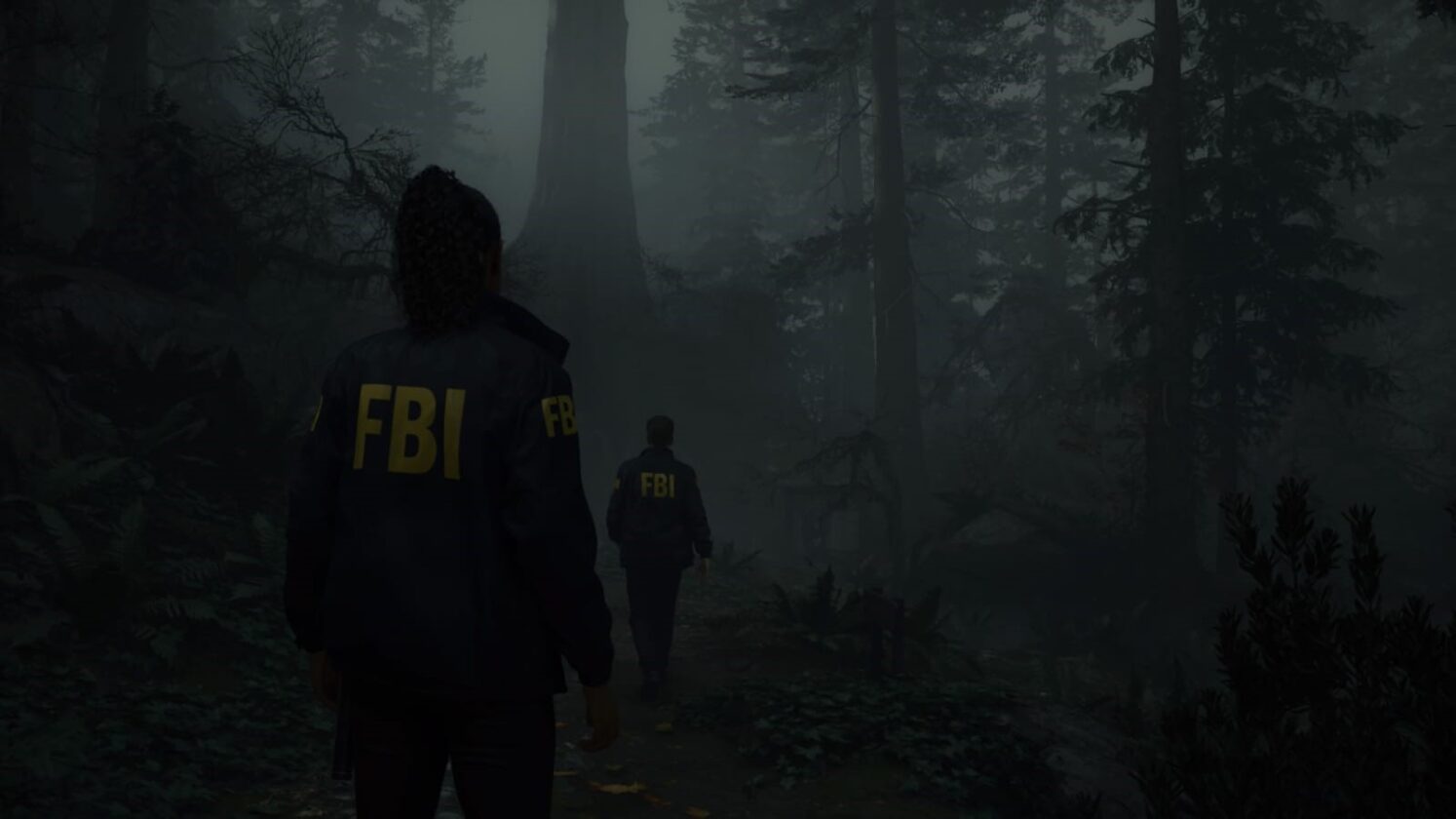
Alan Wake 2 picks up thirteen years after the events of the original and features two protagonists, the bestselling titular crime novelist himself and a studious and streetwise detective, Saga Anderson.
Saga arrives at Bright Falls to investigate a string of gruesome murders by the Cult of the Tree, who just happen to be connected to the Dark Place. She soon finds herself embroiled in the very mess Wake encountered over a decade ago.
Their worlds soon collide as Saga somehow unknowingly pulls Wake out from the Dark Place, where he has resided for over thirteen years, in a never-ending nightmare. All the while, his evil doppelganger, Mr. Scratch, has continued to roam free, tormenting his ex, Alice.
The Dark Presence, which manifests itself as Mr. Scratch, is now out to use the book Alan wrote to corrupt the real world by bringing his dark, twisted fiction to life.
At the same time, Alan was able to stop the Dark Presence before; this time, it has pulled Saga into its twisted narrative. The key to the entire predicament is the very light switch that helped Wake out for the first time, which happens to be in the hands of the Cult.
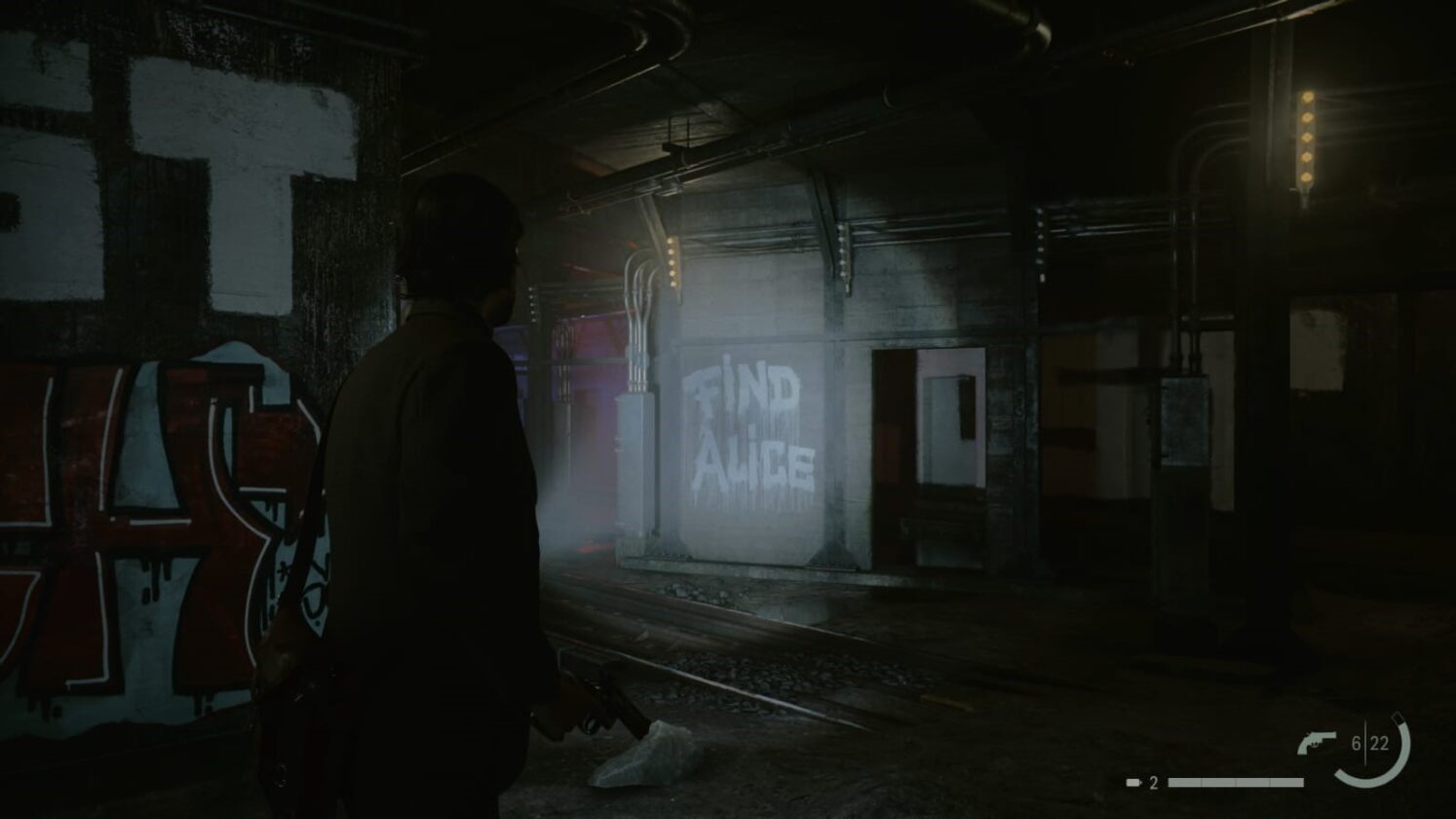
While Saga’s and Alan’s narratives intertwine considerably throughout the game, each has separate stories that unfold simultaneously throughout the game and feed into the larger narrative.
Alan’s part of the story is in the surrealist Hitchcockian Dark Place, a greedy and nightmarish version of New York. It is adorned with signs of Alan’s writing and foreboding messages.
On the other hand, Saga’s story is relatively more grounded, relegated to Bright Falls and its surrounding areas. The apparent differences are very well established, and even though they intertwine at times, it’s never to the point where you’re taken out of the individuality of both stories.
The contrast serves as an excellent reminder of not only how Remedy can create two distinct yet joint narratives but also how far individualism in a dual-protagonist setup goes to keep things fresh.
Often, games built around the same conventions fall into a habit of copy-pasting mechanics across characters, which comes off as lazy and, by the time the game is done, ends up being monotonous. Remedy does away with this idea entirely.
The contrast primarily manifests in how each character progresses through their missions and how each story approaches and considers problem-solving.
Saga, being a detective, takes a more methodical approach to how she solves mysteries. When playing through her sections of the game, you progress the story by solving cases, which is done by picking up clues, finding Alan’s manuscript pages, and talking to witnesses.
All the clues you gather can then be taken to the Mind Place, where you can plot them together to solve questions related to that case and further your investigation.
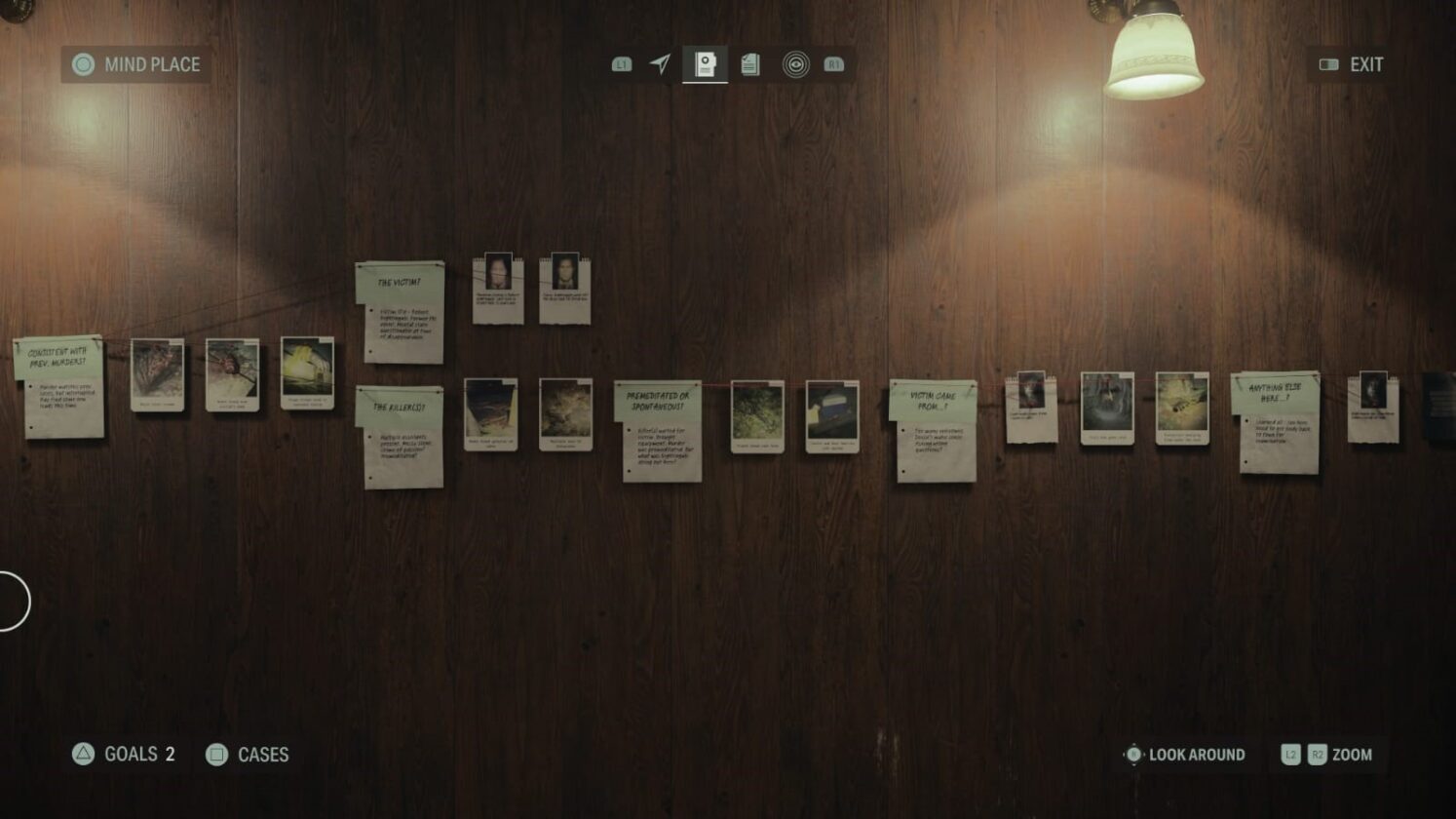
The more clues you gather, the more investigation options become available on the board, and you’re able to make a much better sense of the workings of the cult and the other elements at play.
The mind place and the evidence board serve as more than just a fancy place to plot your evidence; you must meticulously consider how each piece of evidence answers the currently open questions and what you’re doing. It’s not super complicated, mind you, but it does have you use your noggin as it takes you on a detective power trip unlike any other game and puts you right in the mind of Saga.
Saga’s ‘abilities’ allow her to profile people of interest where she can elicit further information from them, which opens up even more narrative threads. The Mind Place works drastically different for Alan.
When playing as Wake, you won’t be collecting evidence. Instead, you’ll use your writing prowess to rework entire sections of the Dark Place to your advantage. Often, you’ll come across sections where you find echoes, which you can use as new plot beats that allow you to reshape entire sections of a particular scene.
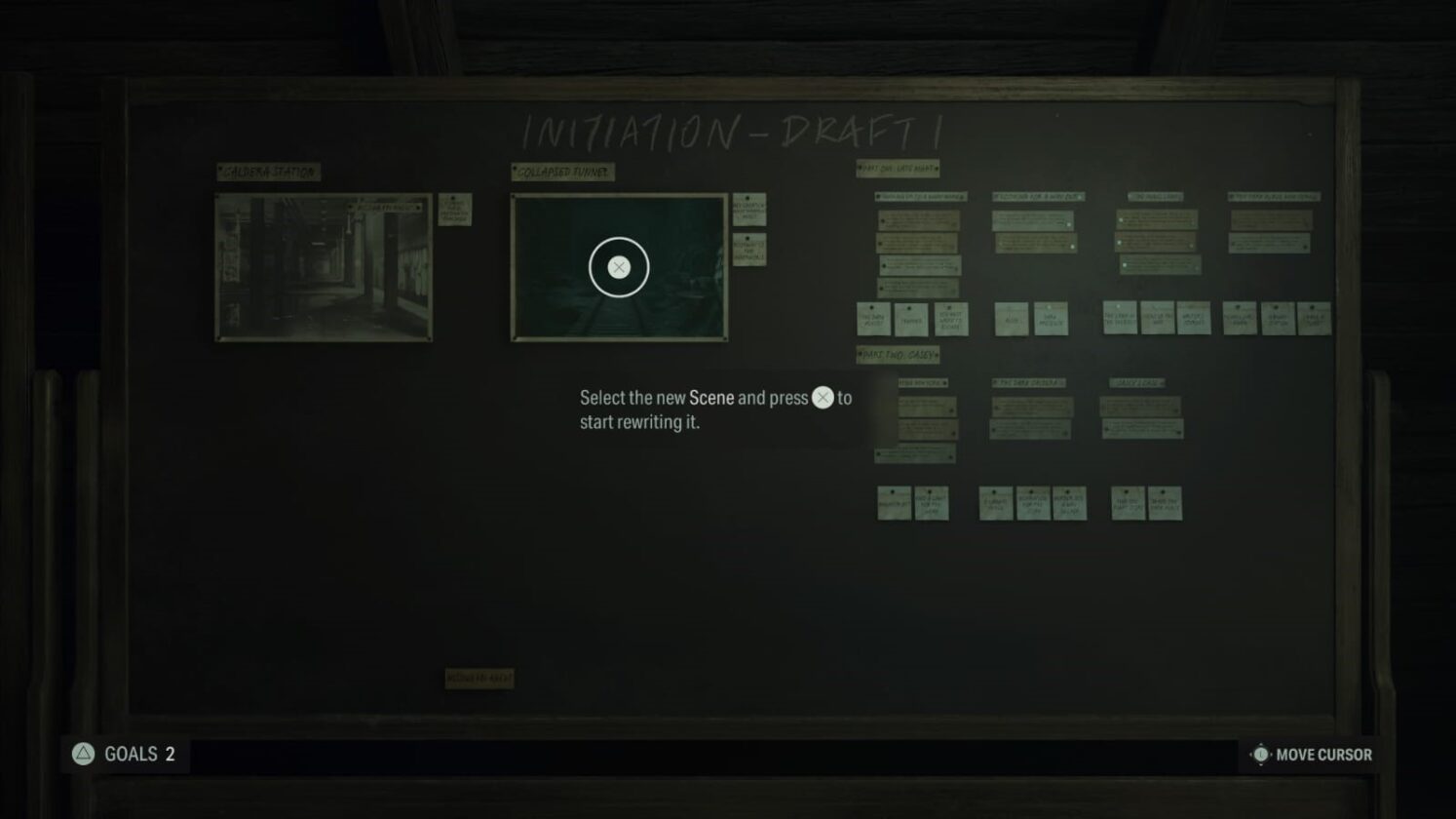
You quite literally rewrite reality to solve puzzles. You never know which plot beat holds the answers you’re looking for and which one will push you into danger; it’s always a coin toss and an exhilarating one at that! This mechanic is further accentuated by the Angel Lamp, which lets Alan reshape areas, open new paths, and solve puzzles by manipulating the scene using light.
Sometimes, both these mechanics work in tandem, where I feel the game truly shines and highlights the excellent level design, which is quite literally second to none.
Alan Wake 2 isn’t as constricted as the first game. The game feels less linear and more alive. It pushes you to explore every nook and cranny because that’s where you’ll find collectibles and character upgrades.
For Wake, they’re a series of spiral markings dotted around New York that act like perks, while for Saga, they’re torn-up pieces of Alan’s manuscripts that you can use to upgrade her weapons. Abilities and upgrades do not transfer between characters.
Alan Wake 2 makes heavy use of both in-engine cutscenes and live-action sequences to progress the story.

The excellent direction between both mediums never feels disjointed as it adds more nuance to the way the story is told and, in many cases, immerses you in the world even more.
Some sequences, like the character death screen for Alan, add genuine horror to the game, while the talk show segments in the Dark Place add a grounded element to the surreal bouts of storytelling the game has otherwise.
There is a very fine balance here, one that elevates and redefines how live-action sequences fit into games. Remedy has done this before with Control, but in the case of Alan Wake 2, it has been pushed to new heights.
The game also uses occasional jump scares, and like the live-action sequences, these are done very tastefully. They never feel out of place or tacked on; in fact, they only serve to accentuate what’s unfolding on screen, as does the game’s excellent soundtrack, which throws a thematically appropriate song at you at the end of every chapter.
The Taken return in Alan Wake 2 and are more dangerous than ever. While the first game threw a horde of enemies at you at any given time, the newer installment takes a more methodical and focused approach to combat.
There is a sense of ever-impending doom as you traverse the world as Alan, as swarms of the Taken appear, whispering and calling out to you. You can use your flashlight to make them disappear or walk right through them. What makes combat work is the uncertainty that comes with every new area you approach. Not all Taken will attack you; sometimes, they’ll fizzle out without a word.
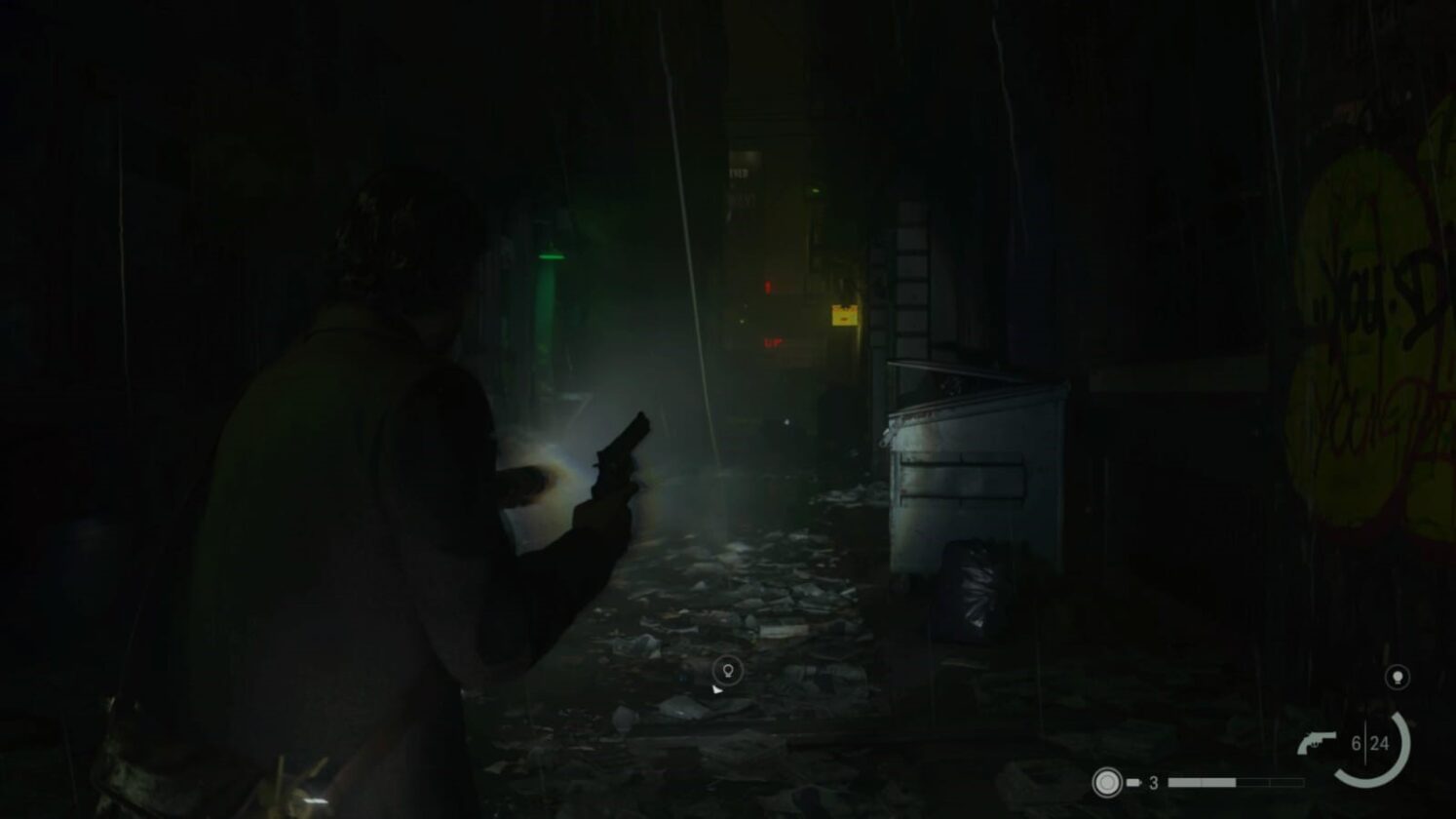
However, you can never let your guard down as you never know which ones will attack. It brings about the same kind of dread that I experienced in the recent Resident Evil and Dead Space remakes, and I found that the anxiety associated with this type of combat design always kept me on my feet.
Saga’s combat sequences work slightly differently as far as enemy types are concerned;. At the same time, you will come across the Taken occasionally; her enemies tend to be more humanoid, although just as scary and tough as Alan’s.
Much like Resident Evil, your resources in Alan Wake 2 are quite limited. Flashlight batteries, ammo, and aid items are littered throughout the world. This time, lamp posts heal you significantly less, and you’ll mainly have to use aid items to patch yourself up.
You need to manage your inventory and items effectively to make sure you can make it through to the finish line, which includes being accurate with your guns to land headshots while also avoiding damage the best you can by dodging, which this time around has been given an almost Soulslike treatment where enemies attack in a rather patterned way.
Guns feel weighty and satisfying, though you can always fall back on melee attacks should you find yourself without ammo.
